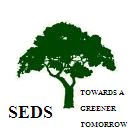While SEDS staff sat together for the CDM meeting of December, in South Africa world talks on climate change struggled to overcome a rift on the future of the Kyoto Protocol (and CDM). In Durban, the European Union is trying to forge a coalition of the willing behind its plan in order to put pressure on the world's top three carbon emitters - China, the United States and India - to sign up. None are bound by the Kyoto Protocol, the only global pact that enforces carbon cuts. Washington says it will only pledge binding cuts if all major polluters make comparable commitments. China and India say it would be unfair to demand they make the same level of cuts as the developed world, which caused most of the pollution responsible for global warming.
The conference is finished with an agreement that the EU sets a 2015 target date for a new deal that would impose binding cuts on the world's biggest emitters of the heat-trapping gases, a pact that would come into force five years later. The climate agreement is saved, the climate on the other hand…
SEDS is working hard on the CDM project (Clean Development Mechanism). By building well-functioning biogas systems, SEDS can yield a whole range of benefits for their users, the society and the environment in general. The major benefits SEDS is focusing on are the following: saving fossil fuels, saving time collecting firewood, protecting forests, saving money, improving hygienic conditions, producing high-quality fertilizer and improving the rural standard of living. SEDS realizes that they cannot reduce the global climate change, but they believe in the fact that they can reduce the local emissions and save the local environment. At the same time SEDS is doing research on the social and economic impact of the CDM-project, because they believe in the positive impact of biogas-installations on households.
Last month SEDS identified 977 new beneficiaries for biogas installations. The excavation of the pits is done and construction is going on. The digging of the pit can either be done manually with labor or use a mechanical excavator. Sand, bricks and granite chips (jelly), cement and hardware are provided by SEDS after the pit is excavated. In the mean while several tractors, trucks and bullock carts are transporting material to the people seven days a week.


